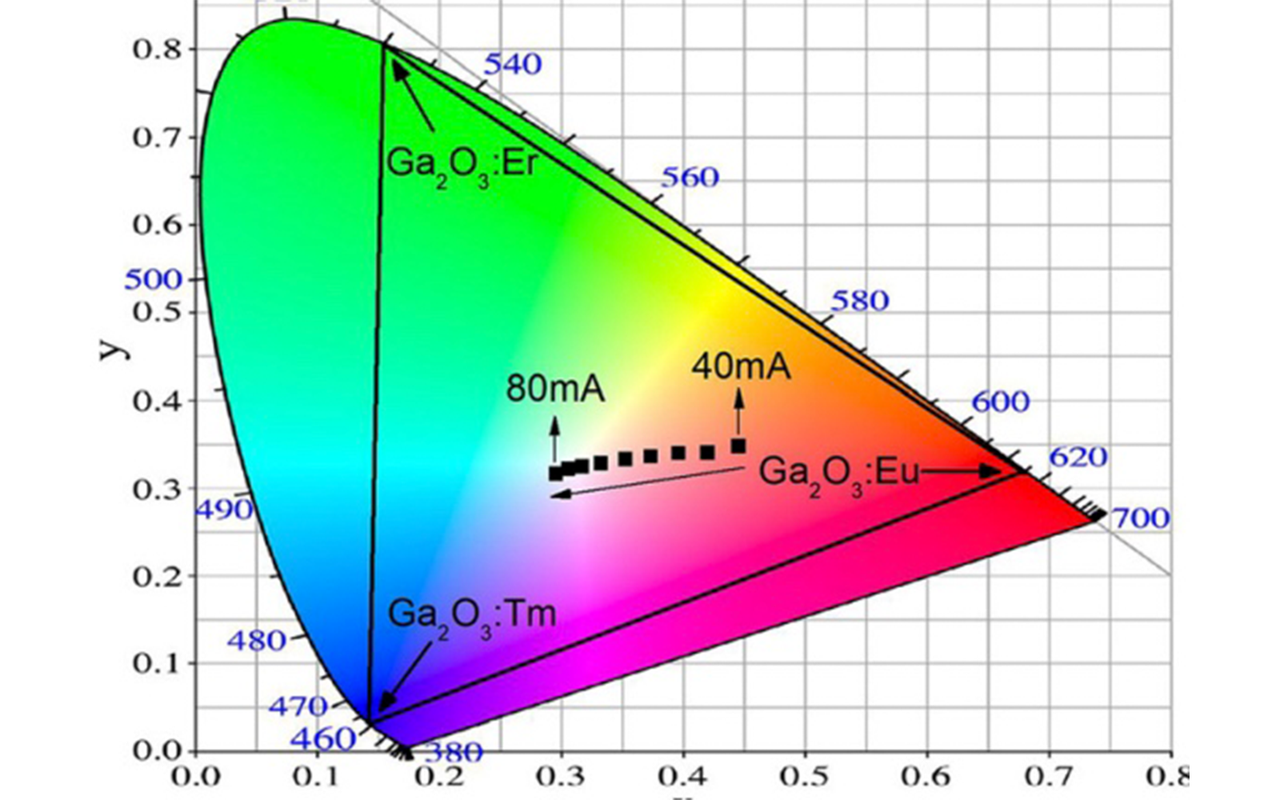White LEDs | Phosphor-free | Trends
|
Aug 24, 2021
Phosphor-free White LEDs – Saga University, Japan
Saga University in Japan has reported work towards white light-emitting diodes (WLEDs) based on rare-earth (RE)-doped gallium oxide (Ga2O3) [Yafei Huang et al, Appl. Phys. Lett., v119, p062107, 2021].
Artificial lighting technology is of vital importance because it has involved in almost every aspect of modern society. As the next-generation light source to replace traditional incandescent and fluorescent lamps, white light-emitting diodes (WLEDs) are of crucial significance for illumination and displays owing to their excellent merits, including small size, environmental friendliness, high reliability, low power consumption, longevity, and high luminous efficiency.1–5 So far, the commercially available strategy for WLEDs is to utilize blue-emitting InGaN LED chip with yellow-emitting phosphors coating.6–8 However, WLEDs produced in this strategy remain controversial owing to the innate deficiency of red and green components in the spectral region.9–11 Furthermore, the usage of phosphors compromises the device reliability due to unavoidable shortcomings, including Stokes energy converting loss and decreased thermal stability.12,13 In order to achieve the ultimate potential of solid-state lighting (SST) to be smart and ultra-efficient, it has been pointed out that the phosphors must be ultimately replaced by multi-color semiconductor electroluminescence in the blue, green, and red.14,15 Therefore, it is urgent to develop single-material-based WLEDs depending on direct primary color mixing rather than blue-light stimulated phosphors, which enables smaller pixels for display applications and will be conducive to micro-LED displays.16
In terms of semiconductor-based LEDs relying on color mixing, one common approach is to integrate three different layers of InGaN in which blue, green, and red emissions are typically produced by modifying the indium concentration.16,17 The spectra produced in this way usually suffer from broad emission band as well as unstable emission wavelength because of the temperature dependence on bandgap.18 Another strategy takes advantage of rare-earth (RE) doped wide bandgap semiconductors (WBGs). In this case, the spectra are characterized by sharp and narrow emission bands and ultra-stable emission wavelength against ambient temperature and injection current, making RE doped WBGs ideal candidates for optoelectronic devices.19–22 Over the last two decades, substantial progress has been made in color LEDs using RE doped GaN and ZnO.16,23–27 Zhang et al.25 have reported that white light emission can be theoretically obtained from the GaN film codoped with Eu, Er, and Tm at a large voltage of −100 V. Recently, Frieiro et al.27 have reported RGB LEDs based on ZnO films doped with Ce, Tb, or Eu, while they did not obtain pure white emission due to the absence of blue emission from Ce3+ ions. Nowadays, β-Ga2O3 is emerging as an ideal host for RE ions benefiting from its ultra-wide bandgap (4.9 eV),28–30 which is advantageous to improve the thermal stability and luminous ability of RE dopants at room temperature.31 However, there are no reports available related to full color (white) LEDs based on RE doped Ga2O3.
Full Article: https://aip.scitation.org/doi/10.1063/5.0060066
___
© 2021 LED professional / Luger Research e.U.

